Japanese Researchers Develop Ultrathin, Highly Elastic Skin Display
"Device displays electrocardiogram recorded by skin sensor, holds promise for home healthcare applications"
EMBARGOED, NOT FOR RELEASE UNTIL:
11:00 AM US Central Standard Time on Saturday, February 17, 2018
5:00 PM UK GMT on Saturday, February 17, 2018
2:00 AM Japan Standard Time on Sunday, February 18, 2018
Documents
| Press Release (English) | PDF (217KB), EurekAlert! |
|---|---|
| Press Release (Japanese) | PDF (542KB) |
| Press Conference Handout (Japanese) | PDF (2.6MB) |
Photos (Credit: 2018 Takao Someya Research Group)
| High resolution | |||
|---|---|---|---|
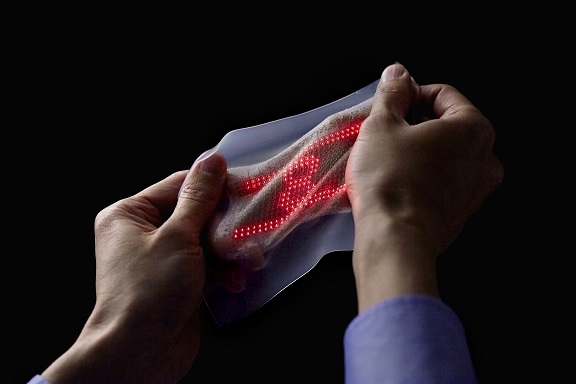 |
6MB | Photo 1: Ultrathin deformable skin display withstands stretching
|
|
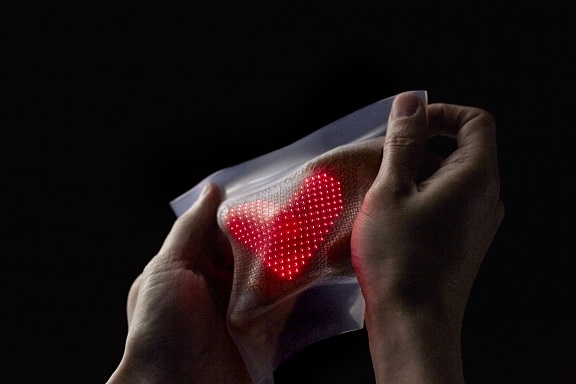 |
18MB | Photo 2: A heart symbol on skin display |
|
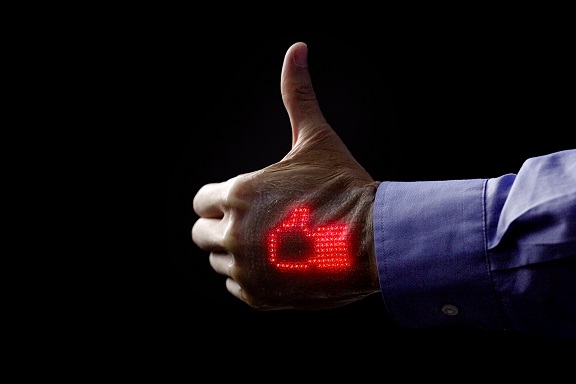 |
6MB | Photo 3: Thumbs-up icon on skin display
An integrated “skin electronics” system allows health monitoring at home and gives doctors remote access to biometric data transmitted wirelessly to a medical cloud. It promises to enhance self-care and accessibility of medical information to various segments of the population, including children and the elderly. A thumbs-up image on the skin display serves as an indicator of good health. |
|
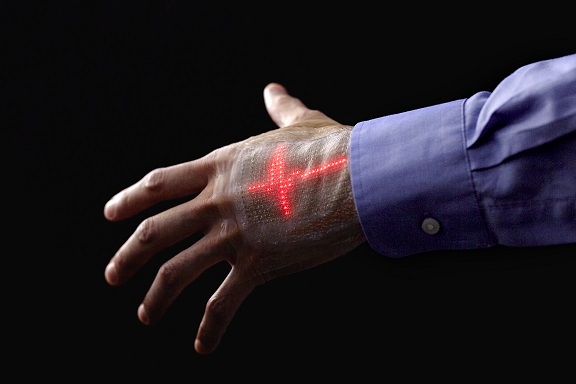 |
7MB | Photo 4: Moving electrocardiogram waveform on skin display
|
|
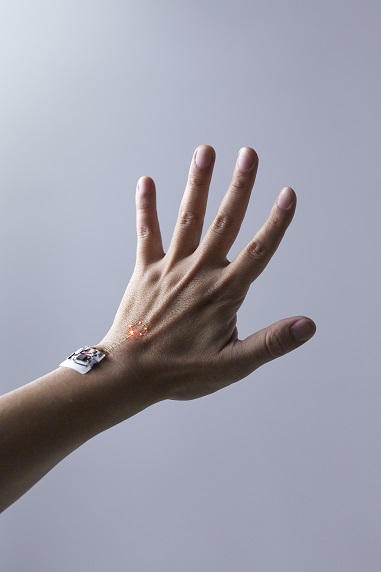 |
8MB | Photo 5: Nanomesh electrodes attached on the skin supply electricity to LEDs. |
|
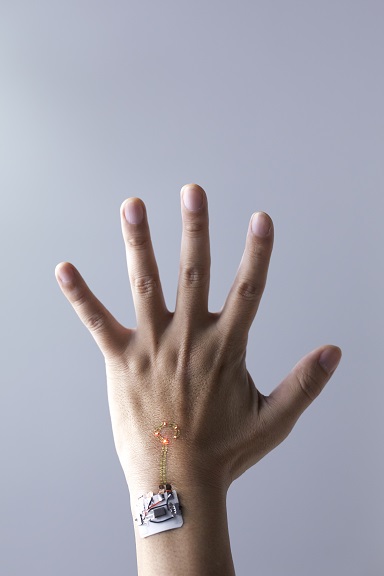 |
Photo 6: Nanomesh electrodes attached on the skin supply electricity to LEDs. |
||
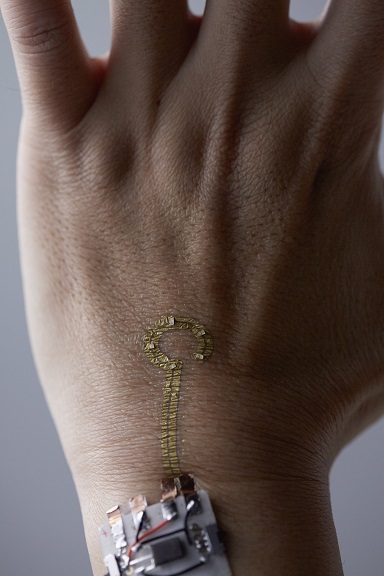 |
13MB | Photo 7: Nanomesh electrodes attached on the skin supply electricity to LEDs. (When turned off) |
|
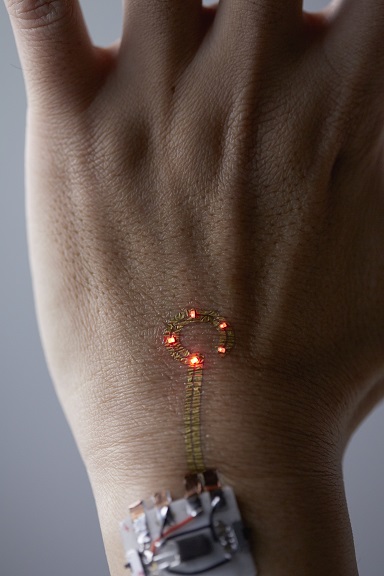 |
12MB | Photo 8: Nanomesh electrodes attached on the skin supply electricity to LEDs (When turned on) |
Movies
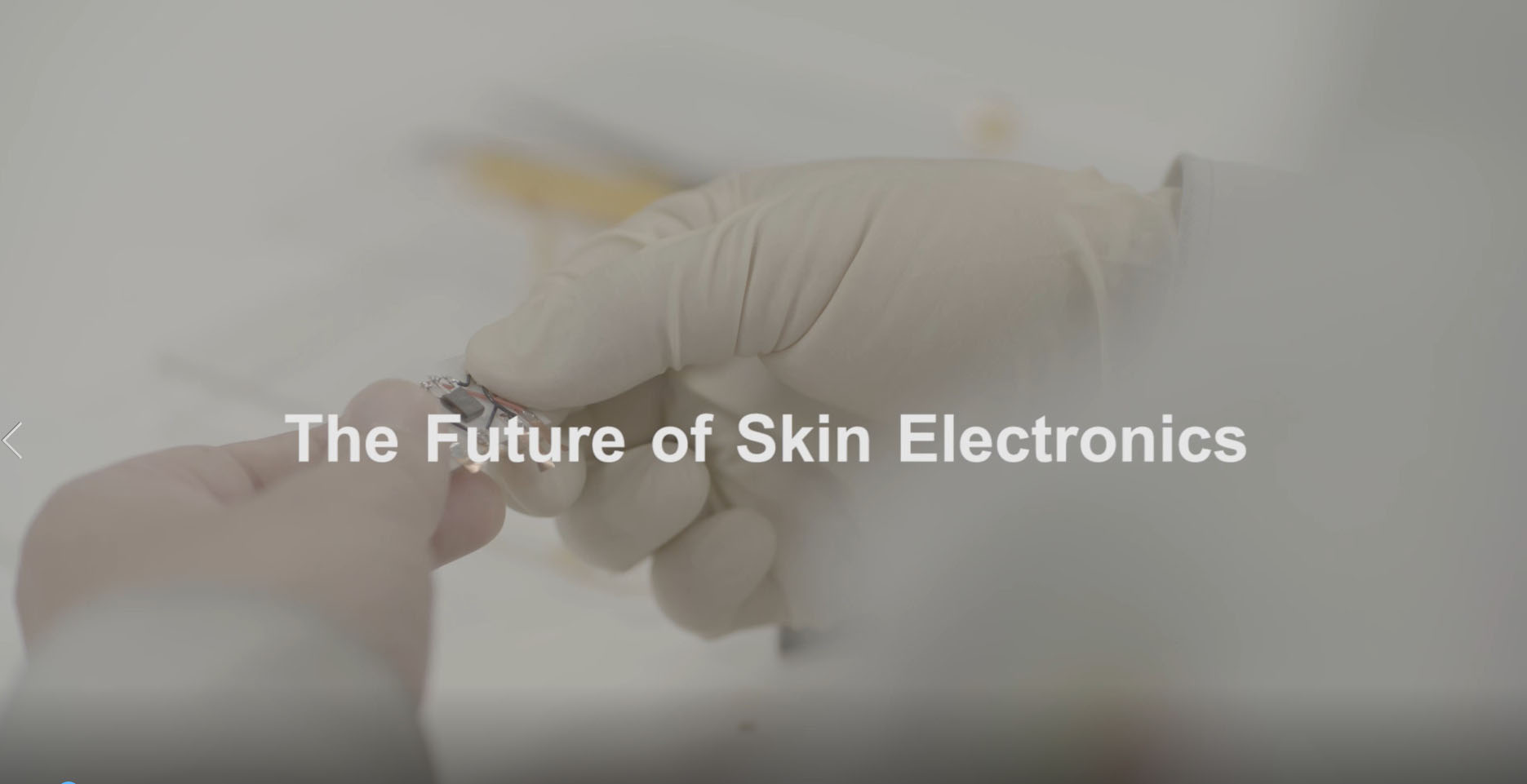 |
Movie with English Subtitles (95MB) | VIDEO: "The Future of Skin Electronics"
* Should you prfer the videos in higher resolutions, please contact Professor Takao Someya @ someya(at)ee.t.u-tokyo.ac.jp. |
 |
Movie with Japanese Subtitles (95MB) | VIDEO: "The Future of Skin Electronics"
* Should you prfer the videos in higher resolutions, please contact Professor Takao Someya @ someya(at)ee.t.u-tokyo.ac.jp. |
 |
Movie without any Subtitles (93MB) | VIDEO: "The Future of Skin Electronics"
* Should you prfer the videos in higher resolutions, please contact Professor Takao Someya @ someya(at)ee.t.u-tokyo.ac.jp. |
Summary
A new ultrathin, elastic display that fits snugly on the skin can show the moving waveform of an electrocardiogram recorded by a breathable, on-skin electrode sensor. Combined with a wireless communication module, this integrated biomedical sensor system—called “skin electronics”—can transmit biometric data to the cloud. This latest research, developed by a collaboration between researchers at the University of Tokyo’s Graduate School of Engineering and Dai Nippon Printing (DNP), a leading Japanese printing company,is slated for a news briefing and talk at the AAAS Annual Meeting in Austin, Texas on February 17th.
Contact information
Dr. Takao Someya, Professor Department of Electrical Engineering and Information Systems
Department of Electrical Engineering and Information Systems
The University of Tokyo7-3-1 Hongo, Bunkyo-ku, Tokyo 113-8656, Japan
TEL: (+81)-3-5841-0411 FAX: (+81)-3-5841-6709 E-mail:someya@ee.t.u-tokyo.ac.jp
URL:http://www.ntech.t.u-tokyo.ac.jp/